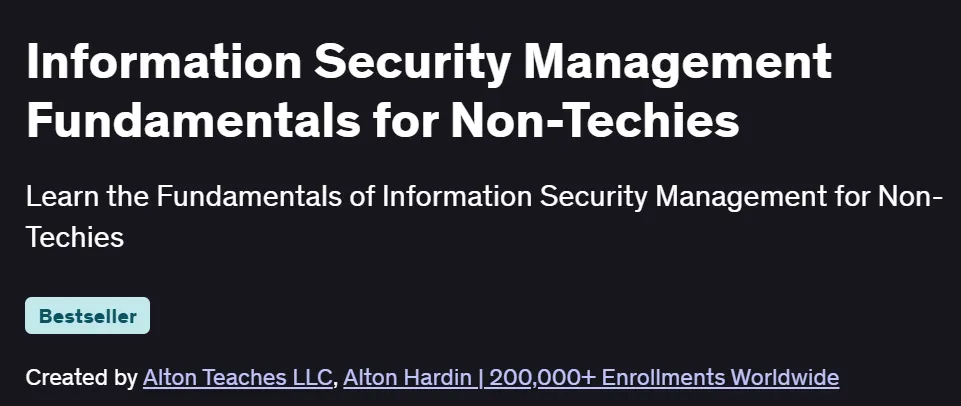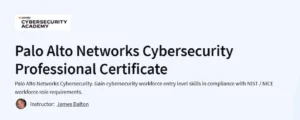What will you in Information Security Management Fundamentals for Non-Techies Course
- Grasp foundational information security concepts, including the CIA triad and security governance.
- Identify common threats and vulnerabilities across networks, systems, and applications.
- Apply risk management methodologies to assess and mitigate security risks.
- Understand cryptographic principles for confidentiality, integrity, and authentication.
- Implement access control models and identity management best practices.
- Recognize the steps of incident response, forensics, and business continuity planning.
Program Overview
Module 1: Introduction to Information Security
⏳ 20 minutes
Define security objectives: Confidentiality, Integrity, Availability.
Explore the history and evolution of information security.
Review industry standards and regulatory frameworks (ISO 27001, NIST).
Module 2: Threats, Vulnerabilities & Risk Management
⏳ 1 hour
Categorize threat actors, motivations, and attack vectors.
Conduct vulnerability assessments and threat modeling.
Apply risk assessment techniques: qualitative vs. quantitative.
Module 3: Security Governance & Policies
⏳ 45 minutes
Establish security policies, standards, and procedures.
Understand roles and responsibilities in a security program.
Build a security awareness and training strategy.
Module 4: Cryptography Fundamentals
⏳ 1 hour
Compare symmetric vs. asymmetric encryption and key management.
Use hashing algorithms and digital signatures for data integrity.
Explore TLS/SSL protocols and certificate lifecycle.
Module 5: Network & Perimeter Security
⏳ 1 hour
Implement firewalls, intrusion detection/prevention systems (IDS/IPS).
Secure network architectures: DMZs, VPNs, and segmentation.
Analyze packet flows and common network attacks.
Module 6: Access Control & Identity Management
⏳ 45 minutes
Apply authentication factors and single sign-on (SSO) solutions.
Configure authorization models: DAC, MAC, RBAC, and ABAC.
Manage privileged accounts and audit trails.
Module 7: Security Operations & Monitoring
⏳ 45 minutes
Set up Security Information and Event Management (SIEM).
Monitor logs, alerts, and anomaly detection.
Develop SOC processes and metrics.
Module 8: Incident Response & Forensics
⏳ 1 hour
Follow the incident response lifecycle: preparation, identification, containment, eradication, recovery.
Perform basic digital forensics: evidence collection and chain of custody.
Draft incident reports and post-incident reviews.
Module 9: Business Continuity & Disaster Recovery
⏳ 30 minutes
Design business impact analyses (BIA) and recovery time objectives (RTO).
Develop and test disaster recovery plans and backup strategies.
Coordinate crisis management and communication.
Module 10: Capstone Scenario & Next Steps
⏳ 30 minutes
Work through a real-world breach scenario to apply your knowledge end to end.
Map learning to certification paths: Security+, CISSP fundamentals.
Plan your ongoing professional development in information security.
Get certificate
Job Outlook
- High Demand Roles: Security Analyst, Information Security Specialist, SOC Analyst.
- Salary Potential: ₹5–15 LPA in India; $70K–$100K annually in the U.S.
- Growth Areas: Cloud security, threat intelligence, and cybersecurity consulting.
- Certification Impact: Builds a strong foundation for CompTIA Security+, Certified Ethical Hacker, and entry-level CISSP tracks.
Specification: Information Security Management Fundamentals for Non-Techies
|





